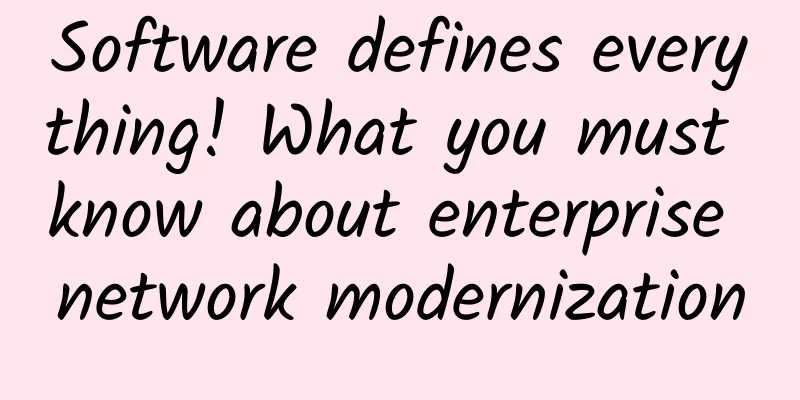Inside ViaWest's innovative, ultra-secure data centers

|
The entrance to ViaWest's data center in Chaska, Minnesota
I was fortunate enough to be invited to visit ViaWest's data center in Chaska, Minnesota. I had imagined a normal building with steam coming out of cooling towers connected to thick power lines and a bank of huge backup generators inside, but I didn't expect there would be two doors at the entrance, which acted as a car trap.
Not wanting to be stuck between two gates, I called Dan Curry, ViaWest's regional sales director and my point of contact for this tour. Curry explained that a little beyond the first gate was a phone booth. Once I had said hello to the duty station, Curry assured me, a second sliding door would open and I could drive into the parking garage. Later, I learned that the imposing wall and gate system formed the first of six security zones that ViaWest staff had implemented. In the reception room, I was greeted by senior marketing executive Kayla Kirkeby, field marketing expert Cheryl Kopka, vice president of sales engineering Peter Elton, and Dan Curry, who walked me through the car trap. We began chatting about the data center in a conference room overlooking the raised floor area. The former Entegris headquarters includes 28 acres of rolling meadows and woodlands. ViaWest completely renovated the 158,000-square-foot building, which was built in 1995. The white space includes 43,000 square feet of raised floor area (capable of supporting a critical 9-megawatt load), and an additional 37,000 square feet is reserved for the next phase of expansion. Elton then outlined the specific specifications of the building and infrastructure. Compliance: •SSAE 16 and ISAE 3402 Service Organization Controls (SOC) 1 Type II, SOC 2 Type II, and SOC 3 reports covering each of ViaWest’s data centers, including operational controls, physical controls, and environmental security controls. • Payment Card Industry Data Security Standard (PCI DSS) and Health Insurance Portability and Accountability Act (HIPAA) compliance reporting covering physical security, information security policies, and managed firewall services. • ViaWest annually registers its compliance with the US-EU Safe Harbor Privacy Framework. Fire Detection and Suppression: • Certified data center smoke detection system. • Early smoke detection through certified Very Early Smoke Detection Device (VESDA). •Double interlock pre-action dry sprinkler system. • Clean agent fire extinguishers are located throughout the data center. electricity: • A source and B source power circuit transfer function. •Multiple medium voltage (13.8kV level) mains power lines. •16 MW redundant fault-tolerant diesel power generation capability. •9 MW redundant fault-tolerant UPS power supply capability.
Heating, Ventilation and Air Conditioning (HVAC) and Environment: • 3,000 tons of redundant, fault-tolerant cooling capacity. • High-density containers (over 700 watts per square foot). •Cold/hot aisle configuration. network: • Redundant fiber optic telecommunications network delivered via Telcordia/Bellcore standards using separate conduits and entries. •Telecom services ranging from T1 to multiple OC192. • Ethernet services ranging from 5 Mbps to tens of Gbps. Visit The data center looked brand new and different from what I had initially imagined. For example, there was no cooling equipment or backup generators to be seen along the way. ViaWest had built a high wall outside the outdoor cooling unit, and the backup generators were placed inside the building. The security work at the data center was also more stringent than I had expected. Safety Each entrance uses two-factor authentication technology: RFID key cards and fingerprint scanners. In addition, to enter the raised floor area, you need to first pass through a two-factor authentication mantrap; the mantrap also has a security camera. In fact, security cameras are everywhere. Next up are the six security zones I mentioned earlier. Most data centers have security zones, but ViaWest takes extra care to define the boundaries of each security zone. Security Zone 1: Fenced off area around data center and parking lot The second safety zone: a police station is set up to ensure the safety of the front hall Safety Zone 3: Ensure lobby security 4th Security Zone: Customer Areas (Lounges, Workstations, and Meeting Rooms) 5th safety zone: Raised floor area Security Zone 6: Single customer cage (includes camera, biometric scanner, audit log, screw-fastened floor tiles and cage roof).
The turnstile shown here allows only one person to enter in the same direction, and it separates the second security area from the third security area. The turnstile eliminates the possibility of someone following in; that is, only one person is allowed in at a time. It also ensures that security personnel know who is entering the heightened security data center area because the turnstile will not turn unless the RFID key card and fingerprint scan image have been registered and cross-checked. In the 6th security zone, Suprema fingerprint scanner and key lock are two of several security options offered to customers. Innovation in lighting While we were in a conference room overlooking the raised floor area, I noticed the lights turned off; when someone walked past the raised floor area, the lights turned on faster than regular fluorescent fixtures could match. Kirkeby saw my curious look and said, "The entire data center uses LED or low-power fluorescent lighting. The raised floor area uses Cooper Lighting's LED high-bay lights, which use 90% less power than other lighting fixtures and reduce the cooling load on the raised floor." Kirkeby adds that a lot of frustration can be avoided if sensors and delay times are adjusted to ensure proper visibility while keeping lights off as much as possible. Innovation in cooling ViaWest Minnesota Data Center uses a hybrid cooling design based on fresh air energy-saving technology. The area under the raised floor is a cooling air plenum. The hot air near the ceiling returns to the Super-CRAC unit (patent number is US20140000847). The cooling capacity of each Super CRAC unit reaches 2 megawatts. Currently, two such units are in use. If a power outage occurs, ViaWest has a unique approach to ensure cooling continues. Elton explains: “If the data center loses power, the air handling units switch to the UPS and continue to provide cooling for the data center. Instead of having the mechanical air conditioning system use the UPS power, we have a pump on the UPS that moves very cold water (49 degrees Fahrenheit) from a 1,650-gallon tank through the cooling coils. The generator starts up after about 15 seconds, and the air conditioning system starts up in about two to three minutes. This design allows the raised floor area to be cooled during the switchover to generator power.” The unexpected Some aspects do seem unusual to me. The raised floor area design includes hot and cold aisles, but the normal ducting to further isolate the hot return air is not there. Elton explains why the ducting is unnecessary: “In traditional data centers, the ceiling height is much lower. The ceiling typically supports 5,000 watts per cabinet. To get higher density configurations, these traditional data center designs must incorporate some kind of cold air containment or hot air containment technology. This increases the cost and configuration of the data center.” “The way ViaWest solves this problem is by using 24-foot-high ceilings. This allows the air to do its natural thing as it heats up, which is to rise. Since this hot air naturally flows to the ceiling, we create a natural heat sink that allows the cool air to stay lower. We keep the air six feet above the cold aisle at 72 degrees Fahrenheit, which can handle densities up to 18,000 watts per cabinet. Then, higher densities can be achieved through the use of containment technology. This design ultimately supports the high-density, low-energy environment required to exhaust the heat out of the room.” I encountered another surprise when I asked to see the data center's Industrial Room Infrastructure Class System certification. Kirkeby replied, "We do not have any certifications at this time in Chaska, Minnesota, but we do plan to get them." |
<<: On the improvement skills of data center operation and maintenance
>>: SDN changes data center architecture
Recommend
Visit the exhibition area without leaving home and experience Huawei's 5G technology beyond your imagination
[51CTO.com original article] Not long ago, Huawei...
Internet of Things, AI: Seven major trends that will reform enterprise IT in 2018!
I have said in recent articles that 2018 will be ...
The scale of data is growing explosively. Practical sharing of data-based operations of cloud-native data warehouses
At the recent 2021 Alibaba Cloud Financial Data I...
my country's network infrastructure already fully supports IPv6
At the 2020-2021 Global IPv6 Development and Outl...
Thirty years of changes and evolution of Internet core protocols
When the Internet began to be widely used in the ...
my country's 5G construction and development have achieved remarkable results, and the 6G layout is about to start
At present, 5G, as a global emerging strategic in...
Why SD-WAN Won’t Kill MPLS
"SD-WAN will replace MPLS" is a common ...
DogYun: Hong Kong AMD 5950X cloud server launched with 20% discount and monthly payment starting from 14.4 yuan
DogYun is a Chinese hosting company established i...
5G, you will be able to make phone calls
Yes, the title is correct. 5G will enable phone c...
Friendhosting New Year Flash Sale: 50% off all VPS, unlimited traffic for 10 data centers starting at $16/year
Friendhosting, a long-established business founde...
Difficulties and solutions faced by ONOS dynamic expansion
1. ONOS consistency guarantee ONOS mainly include...
[11.11] LOCVPS top up 1000 yuan and get 100 yuan, Hong Kong VPS 30% off, 20% off for all
LOCVPS (Global Cloud) released a promotional plan...
China’s 5G leads the world!
[[414223]] This article is reprinted from the WeC...
Pairing private networks with 5G to boost smart city development
Consider the superior performance that 5G offers ...
5G brings unlimited opportunities to different industries
The workplace of tomorrow will look different tha...









